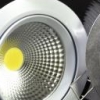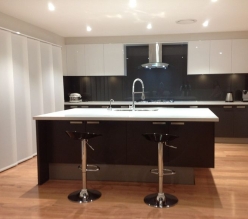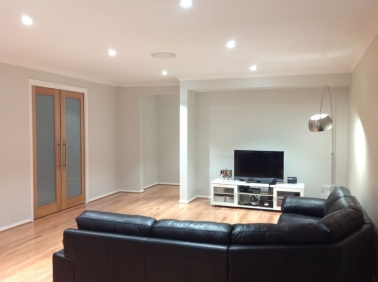
The Myths and Truths of LED Downlights Exposed (Part 3)
By Wattsaver Lighting|July 29, 2013
I have potential customers come in my show room and they bring in some super led downlight they got from the lighting shop next door. I had one guy tell me “oh look at this it has a small heatsink, yours is too large. Look at Apple computers” he said”, “good design is getting smaller, not bigger”. When I explained that his 15W downlight had insufficient heatsink he stated that this was a super material and he made me feel , it was cold, yet it had been running 20 minutes. His claim of a super material fell over when he told me the light cost $14.95.
The excess heat has to go somewhere, 15W is 15W and LEDs are at best only 60% efficient. Here in Australia with high ambient temperatures you need an adequate heatsink. Yes there are super conductive heatsink materials but they are found on the $90+ downlights. Other suppliers use smaller heatsinks but the bottom line is their chips run hotter and they do not put a 10 year warranty on the product. So for now trust me our large heatsink is a sign of good engineering not poor engineering.
Now to colour rendering. I will not say very much as there is a lot of information posted by better qualified people than me all over the net on colour rendering and LEDs. All I will say that if I had to name just 2 factors that give my downlights the edge over even more expensive competitor products, it is they run cool and it’s the colour rendering.
There is nothing worse than washed out colours from poor quality lighting. why would you want it in your home. I once had a local customer ring me and say, hey these lights are just too bright. We cannot live with this. We need dimmers on every light. I did try and tell them 90cm was far too close to space our product. I went and had a look after work, the house was empty as they were yet to move in, and it was super bright. They had chosen natural white. I said move in and live with it for a week and then get back to me. If you really hate it we will install the dimmers. Two days later the husband phones me, “we love the lights”. I went around to look, and with all their belongings in the house and art work on the walls, it looked fantastic. I walked in the wardrobe that she had complained was too bright and all the cloths on the racks just sprang out at me when I turned the light on. Colours look vibrant when the color rendering is high. The take home point is simply:
Colour rendering does matter! – Choose a CRI of 90+
Check with the chip data sheet to ensure the product you purchase is a high CRI product. What no chip datasheet umm! Don’t trust the light importer ask to see the chip manufacturers data sheet.
One final point on chip temperature and spectral shift. As an led chip gets hot, its colour spectrum shifts. So an LED chip running too hot will shift in its colour spectrum output. This affects colour rendering and the colour of the light in a negative way.
The final point is efficiency of the light. How many lumens does it deliver/watt of power consumed. Actually it is called efficacy. Again temperature effects efficiency/efficacy, a hot LED chip runs less efficient than an identical chip running within its prescribed temperature zone.
Although it may seem like an unimportant point efficiency does matter in the final equation of return on investment. A more efficient light will save you more over its life time and will probably have better CRI characteristics, so may be worth paying a little extra for.
Part 4 – coming soon. In part 2, I will discuss dimming which is a major consideration in your downlight purchase. I will also discuss future innovations coming to a downlight near you and then make a brief speech about buying Australian made and the de-industrlization of Australia and why you should care.
The excess heat has to go somewhere, 15W is 15W and LEDs are at best only 60% efficient. Here in Australia with high ambient temperatures you need an adequate heatsink. Yes there are super conductive heatsink materials but they are found on the $90+ downlights. Other suppliers use smaller heatsinks but the bottom line is their chips run hotter and they do not put a 10 year warranty on the product. So for now trust me our large heatsink is a sign of good engineering not poor engineering.
Now to colour rendering. I will not say very much as there is a lot of information posted by better qualified people than me all over the net on colour rendering and LEDs. All I will say that if I had to name just 2 factors that give my downlights the edge over even more expensive competitor products, it is they run cool and it’s the colour rendering.
There is nothing worse than washed out colours from poor quality lighting. why would you want it in your home. I once had a local customer ring me and say, hey these lights are just too bright. We cannot live with this. We need dimmers on every light. I did try and tell them 90cm was far too close to space our product. I went and had a look after work, the house was empty as they were yet to move in, and it was super bright. They had chosen natural white. I said move in and live with it for a week and then get back to me. If you really hate it we will install the dimmers. Two days later the husband phones me, “we love the lights”. I went around to look, and with all their belongings in the house and art work on the walls, it looked fantastic. I walked in the wardrobe that she had complained was too bright and all the cloths on the racks just sprang out at me when I turned the light on. Colours look vibrant when the color rendering is high. The take home point is simply:
Colour rendering does matter! – Choose a CRI of 90+
Check with the chip data sheet to ensure the product you purchase is a high CRI product. What no chip datasheet umm! Don’t trust the light importer ask to see the chip manufacturers data sheet.
One final point on chip temperature and spectral shift. As an led chip gets hot, its colour spectrum shifts. So an LED chip running too hot will shift in its colour spectrum output. This affects colour rendering and the colour of the light in a negative way.
The final point is efficiency of the light. How many lumens does it deliver/watt of power consumed. Actually it is called efficacy. Again temperature effects efficiency/efficacy, a hot LED chip runs less efficient than an identical chip running within its prescribed temperature zone.
Although it may seem like an unimportant point efficiency does matter in the final equation of return on investment. A more efficient light will save you more over its life time and will probably have better CRI characteristics, so may be worth paying a little extra for.
Part 4 – coming soon. In part 2, I will discuss dimming which is a major consideration in your downlight purchase. I will also discuss future innovations coming to a downlight near you and then make a brief speech about buying Australian made and the de-industrlization of Australia and why you should care.


